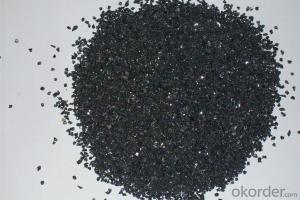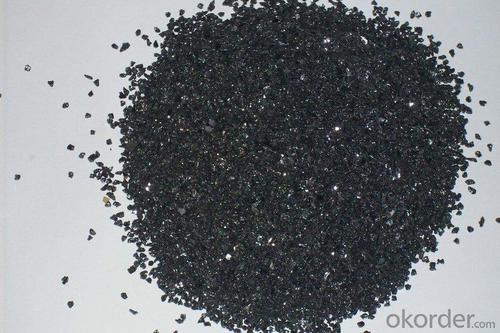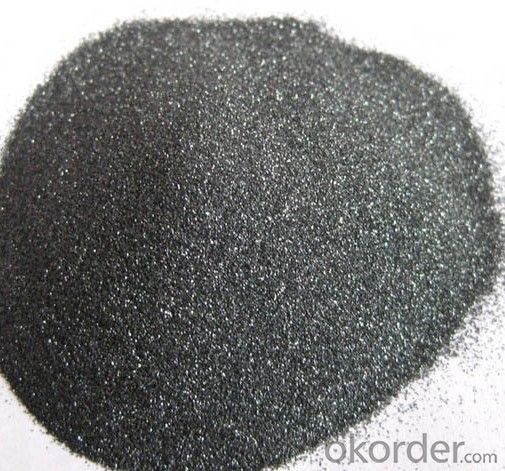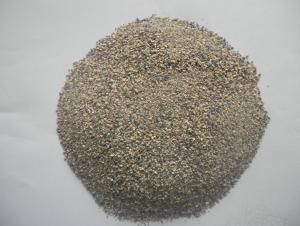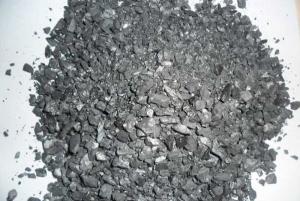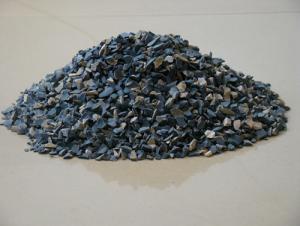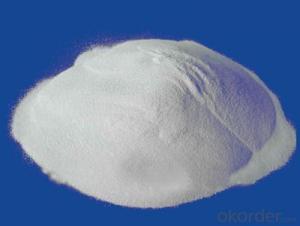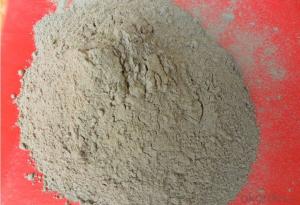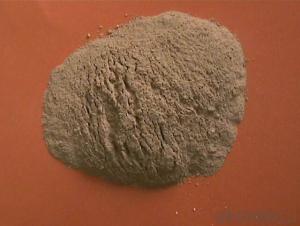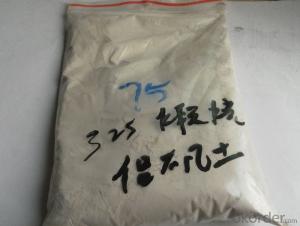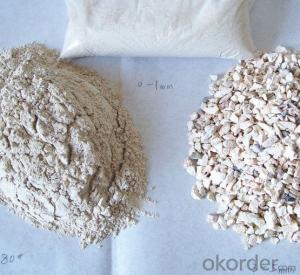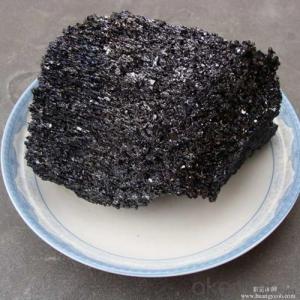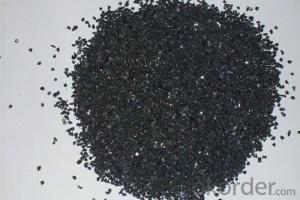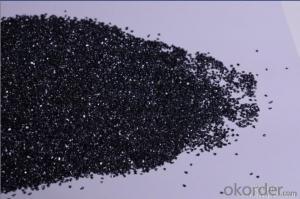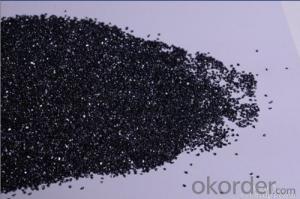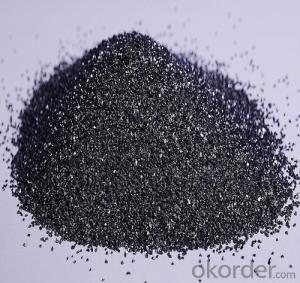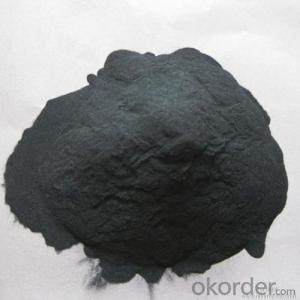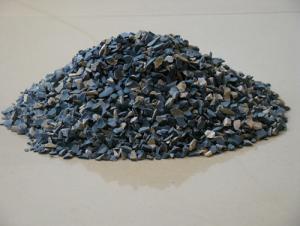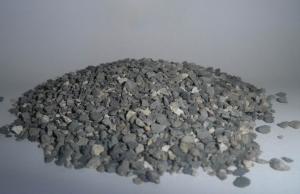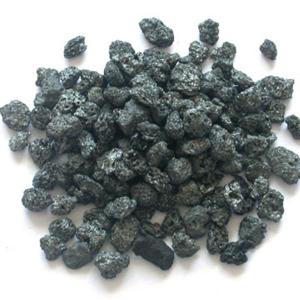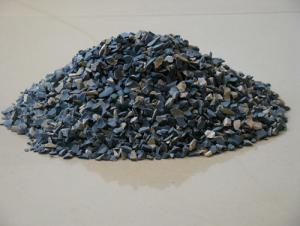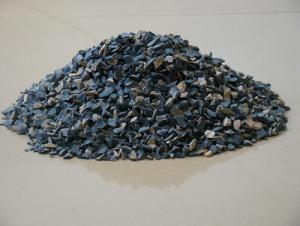Raw Materials for Refractory:Black Silicon Carbide (SiC >98% F10-F1600) for Refractory & Abrasives
- Loading Port:
- China main port
- Payment Terms:
- TT OR LC
- Min Order Qty:
- 25 m.t.
- Supply Capability:
- 2000 m.t./month
OKorder Service Pledge
OKorder Financial Service
You Might Also Like
SIC >98% F10-F1600 black silicon carbide for refractory&abrasives
Product Description
Black Silicon Carbide is produced in a high temperature electric resistance-type furnace from a mixture of quartz sand and petroleum coke.
The hardness of black silicon carbide is greater than fused alumina but less than synthetic diamond.
Its mechancial intensity is greater than fused alumina, but is brittle and very sharp. The mineral has some electrical and heat conductivity.
Black silicon carbide is typically used for machining or finishing cast iron ,non-ferrous metals, stone, leather, rubber, and other materials where sharp cutting characteristics are important .
Black Silicon Carbide is brittle and sharp and has electrical and heat conductivity in some degree.
Aplications :
Black Silicon Carbide is suitable for make grinding wheels, cutting wheels, mounted wheels, oil stone, abrasive media, and also suitable for surface grinding, lapping or polishing.
The abrasive products made of it are suitable for working on Cast Iron, Non-ferrous Metal, Rock, Leather, Rubber, Wood, Ceramic, etc.
Black Silicon Carbide is also broadly used as high-grade refractory material and metallurgical additive.
Available size :
| Grit | SiC | F.C. | Fe2O3 |
| F12-F90 | 98.50%min | 0.20%max | 0.60%max |
| F100-F150 | 98.00%min | 0.30%max | 0.80%max |
| F180-F220 | 97.00%min | 0.30%max | 1.20%max |
| F230-F400 | 96.00%min | 0.40%max | 1.20%max |
| F500-F800 | 95.00%min | 0.40%max | 1.20%max |
| F1000-F1200 | 93.00%min | 0.50%max | 1.20%max |
| P12-P90 | 98.50%min | 0.20%max | 0.60%max |
| P100-P150 | 98.00%min | 0.30%max | 0.80%max |
| P180-P220 | 97.00%min | 0.30%max | 1.20%max |
| P230-P500 | 96.00%min | 0.40%max | 1.20%max |
| P600-P15000 | 95.00%min | 0.30%max | 1.20%max |
| P2000-P2500 | 93.00%min | 0.50%max | 1.20%max |
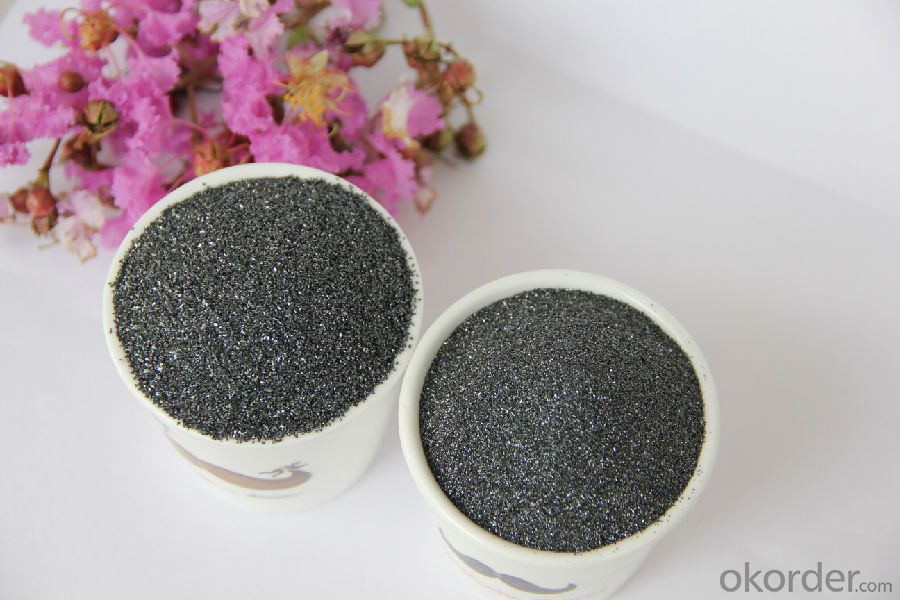
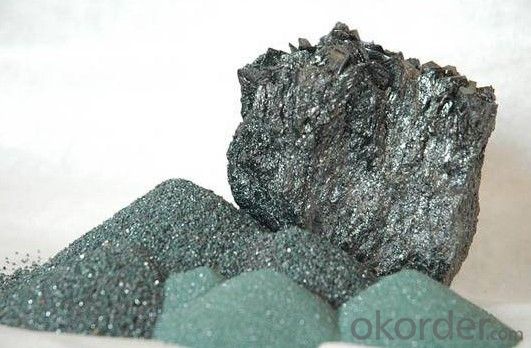
- Q: How to use fire-resistant soil?
- Clay refractory soil 1, characteristics and uses: Clay refractory brick is a weak acid refractory material, its thermal stability is good, suitable for hot air furnace, all kinds of boiler lining, and flue, smoke room, etc.. 2, product specifications form: standard shape, general, special-shaped and special-shaped brick. Physical and chemical properties of fireclay bricks.
- Q: What do RH and DH stand for in refractories?
- DH :For human intelligence (diameter, board of directors). )
- Q: What requirements should refractory materials meet?
- The operating temperature of forging furnace is above 1000, which can ensure the normal operation of the furnace, prolong the life of the furnace and save energy. General requirements for refractories are as follows. 1 They should deform at a sufficient temperature without melting. 2, They should have necessary structural strength without softening and deforming. The volume should be stable at high temperature without expansion, contraction or cracking. 4, They can resist erosion of molten metal, slag, gas and other chemicals.
- Q: What's the fireproof specification for constrcution external wall thermal insulation materials?
- Specification for constrcution external wall thermal insulation materials: Article 1 In order to implement the "State Council opinions on strengthening and improving fire prevention work" (state issued [2011] No. 46), to standardize fireproof design and application of external wall thermal insulation materials of newly constructed, renovated, and expanded civil buildings and to prevent and reduce fire of building external wall thermal insulation materials, this provision is made in accordance with relevant national technical standards and our province real situation. Article 2 When there is no cavity between external wall thermal insulation material for exterior wall and base wall and between decorative layers, the insulation system shall comply with the following provisions: (A) Residential buildings: 1. When the building is higher than 54m, combustion performance of the thermal insulation material shall be A level; 2. When the building is not higher than 54m,combustion performance of the thermal insulation material shall be at least B level. When using B1 level insulation materials, non-combustible materials should be used to make the protective layer, and a protective layer thickness of the first floor of the building should be not less than 10mm, the other floors not less than 5mm; incombustible?materials of more than 300mm height should be used to make horizontal fire barrier zone in every floor. (B) Other buildings in addition to residential buildings
- Q: What is the requirement of refractory concrete for raw materials? What is the main principle of commercial mixing station?
- Commodity concrete stations can not be produced in general, and are made by professional fire resistant concrete manufacturers.
- Q: What kind of materials can be tested their electrical resistivity in the current refractory industry?
- fused cast bricks, fused zirconia corundum blocks, corundum, high zirconium
- Q: how to divided the external wall thermal insulation materials fire rating
- Level A: Incombustible building material: It is a kind of material that almost does not occur burning. Level B1: Nonflammable building material: Non-flame material has good flame resistance. It is difficult to fire under the condition of open fire in the air or high temperature, and it is not easy to quickly spread, and when the combustion?source is removed, the combustion will stop immediately. Level B2: Combustible?building?materials: Flame material has a good flame resistance. In case of fire in the air or at high temperature, it will immediately burst into flames, and easily lead to the spread of fire, such as wooden column, timber roof truss, timber beam and wooden stairs. Level B3: Combustible?building?materials: It has no any flame resisting effects, and is easy to burn, so the fire risk is high.
- Q: What's the material of fireproof and wear-resisting floor?
- It is the kind of special concrete floor, and it should prevent from crash for it will produce fire by friction. It is mostly used for the warehouses storing explosive and inflammable objects and chemical materials. And its production process is the same with that of the common concrete floor, but it uses different material which needs to be the pebbles and sand after processing with marbles and dolomite.
- Q: What's meaning of CN of fire-resistant material?
- The commonly used preparation methodsinclude shock compression, high-pressure pyrolysis, ion implantation, reactive sputtering, plasma chemical vapor deposition, electrochemicaldeposition, ion beam sputtering, , low-energy ion radiation, pulsed arc discharge,pulsed laser inducing, etc. But the compounding result of superhard materialis not ideal due to deposition of amorphous CN film, nanometer level sizedC3N4 crystalline grain set in the amorphous film and few large graincrystal.
- Q: Why the corundum can be used as refractory
- Because the main component of corundum is aluminum oxide!
Send your message to us
Raw Materials for Refractory:Black Silicon Carbide (SiC >98% F10-F1600) for Refractory & Abrasives
- Loading Port:
- China main port
- Payment Terms:
- TT OR LC
- Min Order Qty:
- 25 m.t.
- Supply Capability:
- 2000 m.t./month
OKorder Service Pledge
OKorder Financial Service
Similar products
Hot products
Hot Searches
Related keywords
